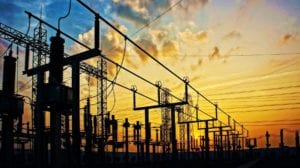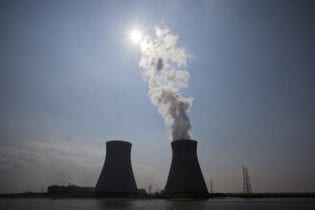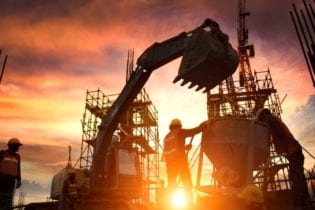Energy woes are synonymous with South Africa right now. As the country’s fleet of mostly coal-powered plants struggles to keep up with electricity demand, South Africans are enduring daily power outages that last six to 10 hours a day.
***
By NJ Ayuk With businesses and institutions struggling to function, and tension mounting among South Africa’s people, the need for solutions is beyond urgent. I say “solutions” because providing the reliable power that South Africa needs now and ensuring that the growing country will have what it needs well into the future, will require multiple strategies. Due to the country’s current reliance on coal to fire its power plants, and coal mines to fuel the economy, increased coal usage must be one of those solutions for the time being. South Africa also will need to continue building its renewable energy sector, and it has committed to do so in alignment with global goals to achieve net-zero greenhouse gas (GHG) emissions. But perhaps one of the most impactful solutions will be natural gas, which not only can power reliable electricity generation but also is a clean energy source – one that can be monetized and one that supports economic diversification as a feedstock for chemical and fertilizer factories. It only makes sense for South Africa to harness its massive – and largely untapped – reserves of natural gas. As described in the new African Energy Chamber (AEC) report, “The State of South African Energy,” cumulative output for South Africa’s large-scale Brulpadda and Luiperd natural gas discoveries, when developed, are estimated to be 50,000 barrels per day (bpd) of liquids and 125,000 barrels of oil equivalent per day (boepd). South Africa must do what it takes to reach that point as quickly as possible. Meanwhile, South Africa should be encouraging ongoing oil and gas exploration through an enabling regulatory environment. And we cannot forget the importance of natural gas projects in neighboring African countries, including Gigajoule’s $550-million Matola Liquefied Natural Gas (LNG) Project in Mozambique, which will supply South Africa with gas; the 865-kilometer Rompco Gas Pipeline from Mozambique to South Africa; and Renergen’s Virginia liquefied natural gas project in South Africa. These projects need to be fast-tracked. Natural gas, if directed toward domestic markets and gas-fired electricity plants, can help South Africa find its way out of its current power crisis. Natural gas can also help ensure energy security and economic growth while the country transitions from fossil fuels to renewables for power generation. South Africa must move decisively to accelerate its gas agenda and start realizing these benefits.
Renewables alone will not save the day
I’ve heard repeated arguments that South Africa’s energy crisis is proof that now is the time for the country to move, at lightning speed, to renewable energy sources like wind and solar power. As I’ve said more than once, South African can and should embrace solar and wind, but it also must consider the intermittency issues that come with them. They can’t be counted on to provide electricity around the clock. South Africa does not need more power fluctuations. It needs baseload power sources that can generate dependable power capable of consistently meeting demand. And the only way to get that is from coal and natural gas. We also have to be realistic about the financial requirements for a complete transition to natural gas. Yes, South Africa’s Just Energy Transition Investment Plan (JET IP) is an excellent program, but as of yet, the money generated is a drop in the bucket. South Africa has acknowledged that it will need about $99 billion to pay for a full transition to renewable energy. Currently, it has received commitments for about $8.5 billion. So, as South Africa pursues renewable energy, the logical approach would be to embrace natural gas as well. It can serve as a reliable energy source for the country’s current and future needs, and as it’s monetized, it can help generate revenue for South Africa’s energy transition. I was pleased to hear South African President Cyril Ramaphosa express that logic. He has made it clear that, while the country does plan to replace coal with lower-carbon alternatives, those alternatives will include both renewables and natural gas. South Africa has an Integrated Resource Plan in place that calls for gas technology generating 6,000 megawatts (MW) from combined-cycle gas turbines, including 3,000 MW from LNG-to-power, 726 MW from gas-to-power, and 1,500 MW from non-specified gas. This is doable, and it aligns with the AEC report’s forecast for South African power generation during the next decade and beyond. While coal currently accounts for about 80% of power generation, coal usage likely will decrease to 65% by the end of the decade, our report says. Gas and renewables, meanwhile, will see growth around the same time: Natural gas will account for 5% of power generation in 2031, while onshore wind and solar photovoltaic (PV)-generated power will make up 17% and 7%, respectively. In the long term, natural gas, onshore wind, and solar PV are expected to increase to 15%, 30%, and 20%, respectively, making up 65% of total power generation.
It’s time for a regulatory rehaul
South Africa’s commitment to pursuing these avenues is praiseworthy, but when it comes to harnessing natural gas, more work is needed. I’m talking about government policies.
South Africa needs a regulatory environment that encourages ongoing investment and exploration by oil and gas companies. Consider the Orange Basin, where Namibia is seeing record-breaking discoveries that will ensure its energy security. But only 20% of the Orange Basin is in Namibia, while 80% of it is in South Africa. Now is the time to capitalize on the opportunity it offers. Unfortunately, South Africa seems to be stuck E&P is being hindered by unnecessary government red tape. We need to change that right away. Oil and gas companies already face tremendous pressure not to produce in Africa; this is no time to pile on the challenges. Oil and gas companies can raise all the capital needed to develop projects in South Africa, but if the red tape and regulatory process is too burdensome, then there is no point in doing natural gas projects that can get South Africa out of this existential energy crisis. It shouldn’t take longer to approve natural gas projects than the time needed to develop it. The African Energy Chamber strongly urges South Africa to ease regulatory burdens on oil and gas companies. And we call upon South Africa to fast-track permit approvals for more drilling, seismic surveys, pipeline developments, and LNG terminal construction. I personally want to make natural gas and an enabling environment a big issue during African Energy Week in Cape Town from October 16
th to 20
th. In 2019, Total Energies exploration team successfully made game-changing amazing condensate discovery on the Brulpadda prospects, located on Block 11B/12B in the Outeniqua Basin, 175 kilometers off the southern coast of South Africa. South Africa also needs to eliminate red tape that could slow the Brulpadda and Luiperd projects discovered by
Total Energies. These steps will be critical for South Africa to start putting natural gas to work for its people, its businesses, and its communities.
Natural gas Is a reasonable solution
Not surprisingly, if you consider the constant pressure Africa has faced in recent years to leave our fossil fuels in the ground, the prospect of pursuing gas-to-power projects in South Africa is being met with sharp resistance. “Dirty gas” is not the answer, environmentalists and Western voices insist. I strongly disagree. We must be pragmatic: South Africa must harness every solution at its disposal, natural gas in particular, to address the country’s energy needs. Fortunately, President Ramaphosa has been pushing back against the anti-gas narrative as well. “Countries on the African continent need to be able to explore and extract oil and gas in an environmentally responsible and sustainable manner,” Ramaphosa said earlier this year during an address at the Investing in African Mining Indaba. “These resources are important for energy security, for social and economic development, and for reducing energy poverty on the continent. And we do not see this trajectory as being mutually exclusive to our focus on moving towards ensuring that we reduce our carbon footprint… In our onward march towards a low-carbon future it is critical that our efforts are both realistic and sustainable.” Well said! I would add that many of the environmental groups trying to keep people in the dark in South Africa – and across our continent – don’t have the same struggles with energy security. In fact, in a move that balances environmental stewardship with energy security, the United States just approved an $8 billion drilling program in Alaska. If it’s acceptable for wealthy countries to perform this balancing act, there’s no reason why Africa’s most industrialized nation cannot do the same. Having clean air doesn’t mean we have to be in the dark.
***NJ Ayuk is Executive Chairman of the African Energy Chamber






